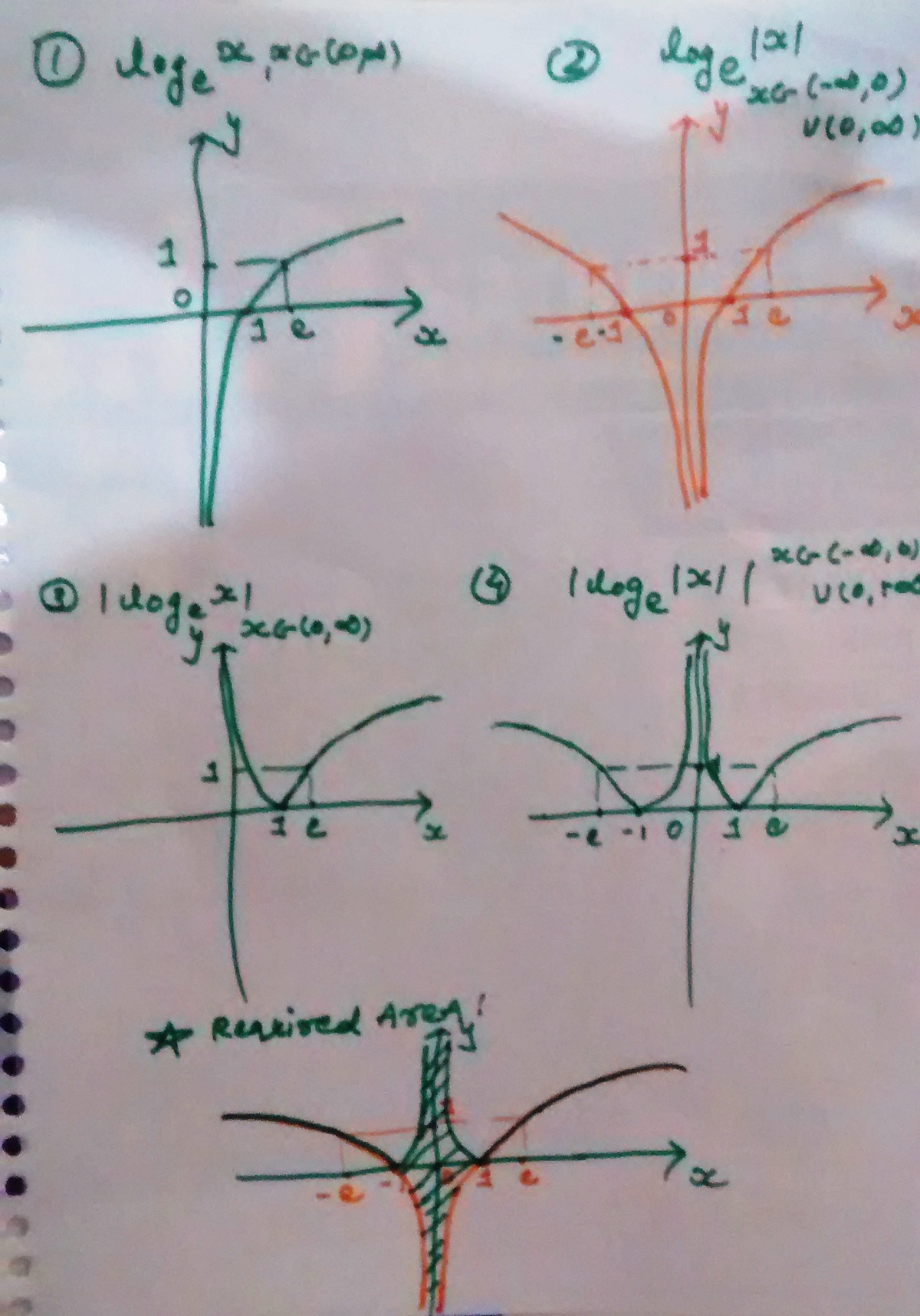Ques. -24
The area bounded by the 4 curves y = lo g x , y = lo g ∣ x ∣ , y = ∣ lo g x ∣ and y = ∣ lo g ∣ x ∣ ∣ is :
Note: The logarithms are in the natural base, and not base 10.
If you're looking to promote your Rank in JEE-MAINS-2015, then go for solving this set : Expected JEE-MAINS-2015 .
This section requires Javascript.
You are seeing this because something didn't load right. We suggest you, (a) try
refreshing the page, (b) enabling javascript if it is disabled on your browser and,
finally, (c)
loading the
non-javascript version of this page
. We're sorry about the hassle.
3 solutions
 manish bhargao These are the graphs
manish bhargao These are the graphs
The area is 4 times the area bounded by y=ln(x) between 0 and 1.Now if you remember integral lnx=x(lnx-1)+c,it could save some time.Even better would be to use the fact that lnx is inverse of e^x and inverse functions are mirror images in the line y=x.and hence required area =4 times integral e^x between limit negative infinity and 0
I agree: letting t → − ∞ in e t is easier than x → 0 in x ln x
Basically, this will look like the graph of l n ( x ) , but it's flipped and rotating. We need to find the absolute value of the area bounded between 0 and 1 of l n ( x ) .
Integrating l n ( x ) with indefinite integral for now since im too lazy to put the bounds on every integral sign (excuse my lack of +C's).
Important note: ∫ e x = e x + C
∫ ln ( x ) d x
let x = e u and d x = e u d u
∫ ln ( e u ) e u d u
∫ u e u d u
Integrating by parts ∫ a d b = a b − ∫ b d a . Let a = u , d a = 1 , d b = e u , b = e u
a b − ∫ b d a = u e u − ∫ e u
u e u − e u
Re substituting for u. Lol, I'm substituting for "u". Haha, ha, anyone? Never mind
x = e u ⇒ ∴ u = ln x
l n ( x ) e ln ( x ) − e ln ( x )
x ln ( x ) − x
Now, we need the definite integral from 0 to 1, so plugging in x=0 will by some magical witch craft=0. When x=1, we have our integral equal to -1. We need the absolute area so we can let it be 1.
Finally, we multiply this by 4 since there are 4 of these figures.
This our answer is 1x4=4.
I think below one is easier and time saving to find integration
∫ l n ( x ) d x = l n ( x ) ∫ 1 d x − ∫ ( d x d l n ( x ) − ∫ 1 d x ) = x ∗ l n ( x ) − ∫ 1 d x = x ( l n ( x ) − 1 )
Log in to reply
hi can you draw it's graph.....
Log in to reply
Yes, I don't know how to draw using some software so, will draw on paper and upload the image.
Log in to reply
@Bhargav Upadhyay – thank you..I will be waiting ...
Log in to reply
@Manish Bhargao – I have uploaded the graphs.. :-)